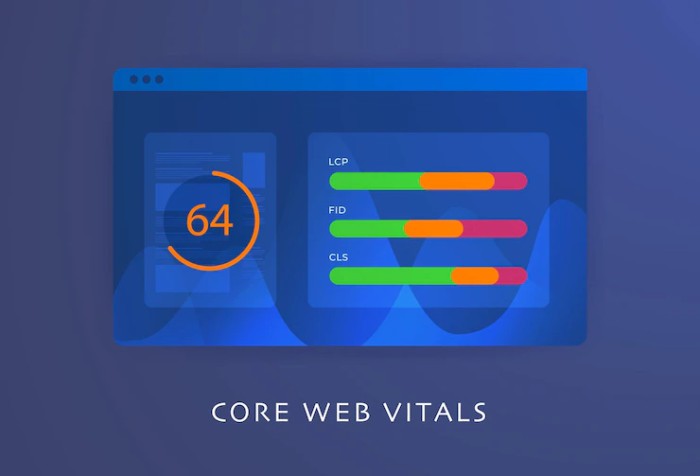A successful blog has killer content that engages the audience. As a blogger, it is essential for you to know how well your content is doing. Planning and executing ideas for your blog is only a part of the job. Your work extends to understanding and measuring the performance of the content to improvise and build future strategies. To simplify this complicated task and make your job easy, Google Analytics is an essential tool for you to master.
Google Analytics is a performance measurement tool that gives you figures for a range of factors including traffic, landing pages, customer engagements, and lead generation. You can extract valuable data from your blog that can give you deep insights using Google Analytics to make critical decisions for further growth of your blog. Having this information and taking required actions on it can give you a competitive advantage.
For bloggers, Google Analytics is a one-stop destination for everything related to data analytics. However, for anyone using the tool for the first time can feel overwhelmed with the amount of information it provides. Therefore, understanding what to measure, i.e. knowing the important metrics for your blog will help you save time and take actions quickly. In this article, we talk about essential Google Analytics metrics that every blogger should keep a track of.
How to begin with Google Analytics?
Google Analytics is your go-to-tool if you are looking to increase your traffic and grow the viewership of your blog. Venture onto your Google Analytics journey by creating and setting up your account on it. It is a quick process if you already have a Gmail account. Once you have your account ready, fill in the details of your blog site that is to be monitored and measured. Complete the set-up process by adding in the tracking code on your pages which will allow knowing the details about the blog’s visitors. Do not get scared about adding in the tracking code, Google has multiple options available to do the same. Select the one that you are aware of and most comfortable with.
You will be able to view the real-time data post setting up and logging into your Google Analytics account. The most basic information you will be able to witness are the number of people visiting your blog currently. To move forward, think of the other essential factors that will determine the kind of content you want to create in the future for your blog and set up goal tracking in Google Analytics. Now that you know the critical parameters that you want to keep a track of and if you check it consistently, making improvements and framing growth strategies becomes more convenient.
What to measure with Google Analytics?
One mistake that we all tend to commit is that we judge the success of our blog solely based on the traffic it generates. Having 5000 views might look like a success, but if the majority left the page within seconds and if no one from those readers converted, it does bring a concern on the content created. While traffic does tell you about the reach of your blog, focusing on other important metrics helps add context to the blog traffic data.
Remember the aim is not just to increase the number of visitors on your blog, but to gain their interest and persuade them to take a desired action. Hence, the other insights lets you know about the content that will attract, engage and convert the visitors into potential customers. These are the five metrics that all the bloggers should essentially keep a track of to produce high quality content that ensures lead generation.
- PageViews
As mentioned above, traffic measured in isolation will not prove to be a useful metric, however tracking it alongside other metrics is crucial for better understanding. Pageviews on Google Analytics represents your blog’s traffic. It shows the number of times each of your blog posts has been viewed.
To view the pageview data for every page on your website, go to ‘All Pages’ in ‘Behavior’ – ‘Site Content’ section. This report will show all pages on your site along with your blog posts including landing pages and product pages. Search for your blog post details in the list. The pageview column shows the number of times each of your posts was viewed in the selected timeframe. An additional column of “Unique Pageviews” can also be seen on the right side of the ‘PageViews’ column. This column tells you the number of unique visitors out of the total pageviews.
The traffic figures of your blog and each individual post lets you know which posts are most popular or rather most liked by the audience. This will help you figure out the topics that develop an interest in your audience and help you plan for the future content. Similarly you can also figure out the topics which are of least interest to your visitors, according to that you can avoid those topics, have better titles, do more promotion, improvise on it or work on its SEO.
- Average Time on Page
You can find Dwell time or Average time on Page in the same report as of the PageViews. It shows on average the amount of time visitors spend on each of your blog posts. Alongside knowing the traffic, evaluating the average reading time of your visitors for your blog post is important. Knowing the average time of your visitors will help you determine whether the visitors are actually reading your blog posts or not.
On the basis of your content and the length of your blog, you can estimate the time it will take for an individual to read. If you see a vast difference in your estimated time and the average time on page by Google Analytics, you have to reconsider the quality of your content. If the average time is way too less than the expected time, you know your visitors are not reading the posts. Check and optimize on your headline, introduction, content quality, presence of page distractions, and loading speed of the pages.
If the average time is higher than the estimated time, recheck the quality of your content. It might have jargons or technical information which the readers are taking time to understand. Go through your content, make it simpler or to the level of your audience’s understanding. You can also optimize on the posts with the highest average time. It reveals that the audience is liking that content and are taking interest in it. Search for topics surrounding similar trends. Keep a tab on the length, subject matter, graphics, etc. of these blog posts and use it to make your content more attractive in the future.
- Returning Visitors
The ultimate goal of any blogger is to become an authority in their niche and to make their presence feel to their target prospects. If you consistently provide quality content to your visitors, they are likely to come to you for any solutions and/or recommend you to others. Once you have established this or come to this level, along with first-time organic visitors, you will be able to develop more ways for attracting traffic. Hence, measuring the number of returning visitors is crucial to evaluate the success of your blog. The returning visitors metric on Google Analytics presents the number of visitors who have come back to your site to read a specific blog post.
An indication of producing high quality content is people referencing your blog posts multiple times, and returning visitors gives you that exact data. Measuring returning visitors per post will illustrate the kind of content that people are finding useful and help you identify similar content that your visitors might be interested in.
- Average pages per session
The Average pages per session metric in Google Analytics helps you know how many pages in total had a visitor viewed during his/her session on your site. As a blogger, you should check how many and which other pages are visitors going on your website post entering via a specific post.
Check the landing pages report which will show you the list of pages that people viewed first when visiting your site. You can check the other data for each of those pages including the bounce rate, average session duration, referrals and pages per session. Not all those who visit your blog are going to convert. Hence, your aim is to maximize the amount of time for which people stay on your blog so that they consume more content and get familiar with your brand. This will later enable them to see you as a reputable source, visit again for more content, or to take a required action like sign up for a newsletter, fill in a form, etc.
If you see that your posts have low average pages per session, consider adding more internal links to help visitors navigate through your blog’s content, or adding compelling offers or CTAs.
- Goal Conversion Rate
The purpose of writing most blogs is to get the visitors to take a desired action once they finish reading the posts. Goals set in Google Analytics will help you measure these actions that you want the visitors to take post reading your blog articles. A desired action could be anything that you want the user to take like signing up for a newsletter, taking a free trial, filling a form, or making a purchase.
This metric will tell you the percentage of visitors who completed that desired action when viewing the first page which was a specific blog post. It is important to track this so you will get to know the role of your blog posts towards the larger goals of your brand. Set up a goal in Google Analytics and check your goal conversion rate in ‘Behavior’ – ‘Site content’. It also reveals the kind of content you need more on your blog, as you can figure out which posts are attracting most qualified leads.
Using these metrics on Google Analytics, you can get data that will help you make more data-driven strategic decisions about your blog. Google Analytics has everything analytics under one umbrella. Apart from the five metrics mentioned above, you can explore parameters to achieve any specific goal that you have. The tool is free of cost, and it can be integrated with other tools; it is the most dynamic and versatile tool out there.
Use this data, optimize on your content and make your blog popular to become an authority in your niche and get desired results. Remember quality appeals and tops everything else, hire freelance writers who specialize in writing blog posts to drive more traffic and engage most audiences.
As a blogger, being data literate will help you gain valuable insights which will lead you to sketch actionable and scalable strategies to grow your blog.










